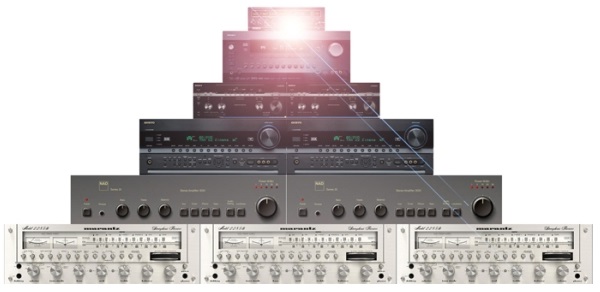- December 22, 2021
- Posted by: Polbin
- Category: Sound Enhancement

AV receiver is the heart of a home cinema system. It provides most of the inputs and outputs to which you connect your devices, including your TV. A receiver offers a simple and economical way to centralize your home cinema system but to select exactly your receiver, you must compare av receivers side by side.
The AV receiver will be the focal point of the audiovisual system. The receiver can reproduce the soundtracks of films in five, seven, nine or eleven channels, in addition to managing one or two subwoofers. To fully enjoy the cinema experience, speakers will be installed around the listeners to create surround sound. The surround system allows the listener to be at the center of the action and experience total sound immersion.
It is also possible to use a receiver to listen to music in two-channel stereo mode, with or without the addition of a subwoofer. While most AV receivers will not deliver the same level of output as a dedicated stereo hi-fi amplifier, some more high-end models can easily compete with the best hi-fi models on the market.
Performance
Power is criteria #1 to consider when purchasing an AV receiver which generally has a higher wattage than their stereo counterparts since they will have to distribute power over 5 to 11 speakers. It is therefore important to make the right choice of receiver for your speakers and the size of your room. The larger the room, the greater the power of the chosen device to have a good feeling of volume felt.
A cinema system adapted to the size of the room will, therefore, allow you to enjoy movies and music by offering a better-balanced sound. Adequate power will then make it possible to optimally reproduce the soundtracks as their creators designed them.
Dolby Atmos
Atmos technology, or 3D surround, allow sounds to come from over the listener’s head. Built-in speakers should be placed in designated locations on the ceiling to reproduce the Atmos effects. This very enveloping technology adds a new dimension to the cinema experience.
HDMI
The receiver is generous in terms of connections, both video, and audio.
First, we will find the HDMI inputs. Recent receivers are equipped with HDMI ports respecting the HDCP 2.2 protocol. This latest generation will be able to decode UHD 4K and HDR sources. The HDMI inputs will also be compatible with all high definition sources 1080p and less.
The HDMI output connecting the amplifier to the television will be implemented with ARC technology which, allows the sound from the television to go to the receiver and to be reproduced in your system. It will, therefore, be very practical if you use the video applications (Netflix and YouTube, for example) included in your smart TV.
Some models of receivers will process signals input by HDMI in upscaling. In simple, as the receiver’s video processor is capable of handling 4K UHD images, it will therefore also improve lower-quality sources to give them rendering as close as possible to 4K quality.

Custom calibration
There are calibration systems to adapt your cinema system to your room. Since it is often impossible to position the speakers correctly in the exact places required by a conventional installation, it is, therefore, possible to correct the sound sent to each speaker via the amplifier.
Some manufacturers offer advanced calibration systems. Working with a program to install on a laptop, a host of fine adjustments are then available to satisfy the most demanding listeners.
Technical criteria
To give optimal sound rendering, a home theater amplifier must comply with several technical criteria. The best known is its power. This should be sufficient to power the pair of speakers chosen in the desired room.
The power of an amplifier must work in correlation with the power required by our speakers. A weaker amplifier will give a thin, directional sound, while an overpowered amplifier that is misused could cause damage to the speakers. For pleasant, well-balanced sound, an amplifier with adequate power is required.
Also to take into account: the harmonic rate of distortion. Value calculated as a percentage, it measures the importance of the deformations undergone by the sound signal. The lower the harmonic distortion rate, the higher the quality of signal processing and therefore, faithful.
It is important to take into account the technical demands of the speakers that we will associate with our amplifier.
The speaker impedance (expressed in ohms) has a direct influence on the power consumption of the amplifier. Most speakers on the market have an impedance of 8 ohms, but it’s not uncommon to find speakers with different specifications. It is therefore important to select an amplifier capable of managing its speakers.


